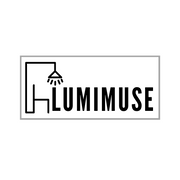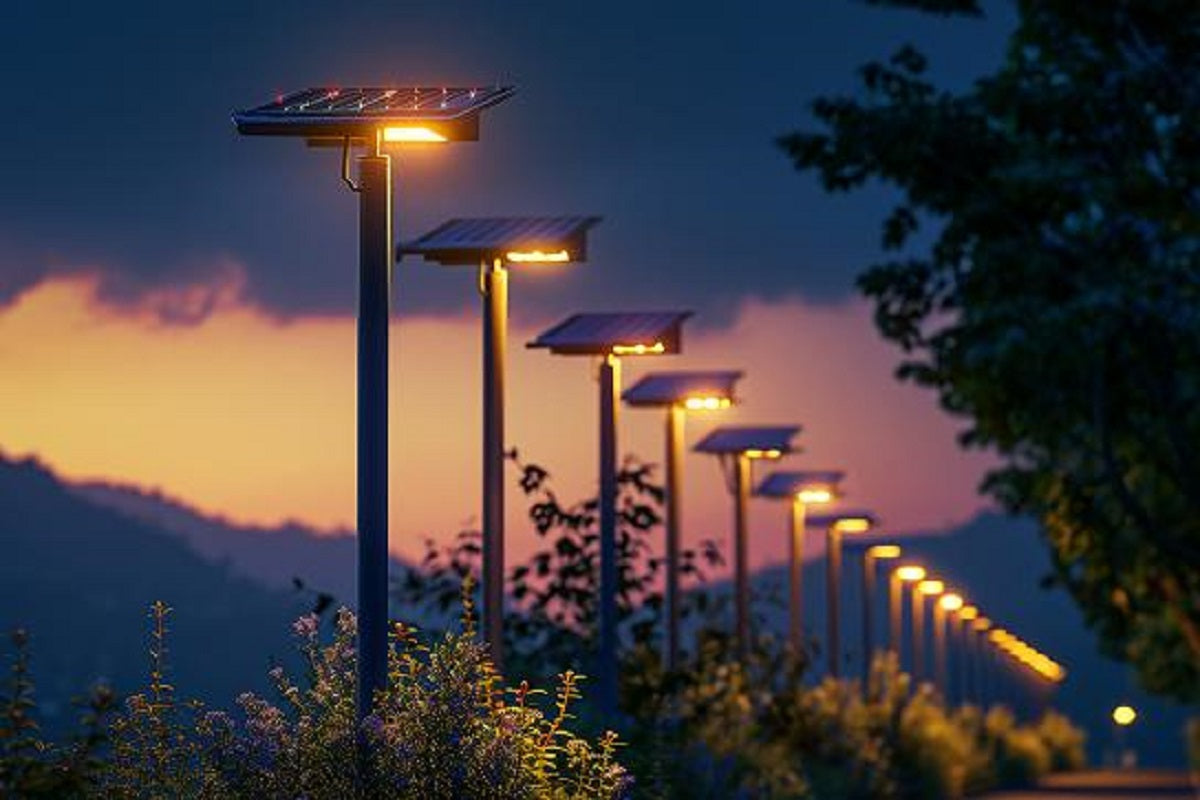Ⅰ Introduction
LED solar lights have transformed outdoor lighting, providing an environmentally beneficial and cost-effective way to illuminate our surroundings. These revolutionary devices use the power of the sun to produce consistent lighting without the need for standard electrical connections. As technology progresses, LED solar lights become more efficient, adaptable, and popular for both household and commercial use.

Ⅱ Types of LED Solar Lights
2.1 LED Solar Lights Outdoor
Outdoor LED solar lights are built to resist a variety of weather situations while delivering consistent illumination for gardens, walks, and outdoor places. These lights are available in a variety of types and designs, including:
Solar Path Lights
Solar path lights are ideal for illuminating pathways, driveways, and garden areas. They often have stakes that may be simply placed into the ground, making installation simple.
Solar Wall Lights
These outdoor wall-mounted lights brighten entryways, patios, and decks. Many varieties include motion sensors to improve security and energy efficiency.
Solar Floodlights
These outdoor wall lights illuminate entryways, patios, and decks. Many models integrate motion sensors to enhance security and energy economy.
2.2 LED Street Solar Light
LED street solar lights are transforming the urban lighting system. These lights have several benefits, including:
- Energy independence: Solar-powered street lights run independently of the electrical grid, lowering energy costs and increasing reliability.
- Low maintenance: Solar street lights have fewer components and do not require regular bulb changes.
- Environmental impact: By using renewable energy, these lights dramatically minimize the carbon emissions connected with typical street lighting.
2.3 LED Sensor Solar Light
Sensor-enabled LED solar lights combine energy efficiency with smart technologies. These lights have motion sensors that activate illumination when movement is sensed, which provides various advantages.
- Improved security: Motion-activated lights prevent intruders and increase safety around homes and businesses.
- Energy conservation: Sensor solar lights enhance battery life and efficiency by only turning on when needed.
- Convenience: Users benefit from automatic illumination, which eliminates the need for manual control or scheduling.
2.4 LED Solar Light Bulb
LED solar light bulbs are adaptable lighting solutions that may be used in various applications. These bulbs often have:
- Integrated solar panels: Small solar panels are incorporated into the bulb's design, allowing for simple outside charging.
- Portable design: Many solar light bulbs include hooks or hanging options, making them suitable for camping, outdoor events, and emergency lighting.
- Various lighting modes: Users can frequently select different brightness levels and lighting patterns to meet their demands.
Ⅲ Benefits of LED Solar Lights
3.1 Energy Efficiency
LED solar lights are extremely energy efficient, transforming sunlight into power and storing it in rechargeable batteries. This approach eliminates the need for traditional power sources, which results in huge energy savings and lower utility expenses.
3.2 Cost-Effectiveness
While the initial cost of LED solar lights may be more than typical lighting solutions, the long-term savings are significant. Solar lights are a cost-effective lighting solution in the long run because they use no electricity and require no maintenance.
3.3 Environmental Impact
While LED solar lights may cost more upfront than traditional lighting systems, the long-term benefits are significant. Solar lights are a long-term cost-effective lighting solution because they don't require power or maintenance.
3.4 Low Maintenance
LED solar lights require less maintenance than conventional lighting systems. These lights provide a hassle-free lighting solution for both home and commercial settings, as there are no bulbs to change or wiring to maintain.
3.5 Versatility and Flexibility
Solar-powered LED lights can be used in places where traditional electrical wiring is cumbersome or unavailable. This versatility provides novel lighting solutions and greater safety in remote or difficult environments.
Ⅳ Installation Guide for LED Solar Lights
How To Install Outdoor Solar Lighting
Most homes may easily install LED solar lights. Here's a step-by-step tutorial to get you started:
Step 1: Select the Perfect Location
Select regions that receive plenty of sunlight throughout the day. Consider sidewalks, garden beds, or locations that need additional lighting at night.
Step 2: Gather the necessary tools and materials.
Gather all necessary supplies, including solar lights, rechargeable batteries (if not provided), a screwdriver, screws or stakes, and a shovel or spade for ground installation.
Step 3: Prepare the Installation Site.
For ground installation, dig holes deep enough to hold the lights. Ensure that the spacing and alignment are consistent with your intended lighting configuration.
Step 4: Install the solar lights.
Insert the solar lights carefully into the prepared holes, or use the accompanying hardware to put them on walls or fences.
Step 5: Adjust Settings (If Applicable)
Configure any adjustable settings, such as brightness or illumination duration, per the manufacturer's instructions.
Step 6: Test the lights.
Covering the solar panels to imitate darkness will help to ensure optimal functioning. The lights should switch on automatically.
Step 7: Maintain and clean the lights.
To maintain best performance, keep the solar panels clean and free of impediments.
Ⅴ Maintenance Tips for LED Solar Lights
To maintain your LED solar lights working properly, follow these maintenance tips:
1. Remove dust and dirt from solar panels on a regular basis using a soft cloth.
2. Trim any nearby vegetation to avoid the solar panels from being shaded.
3. Check and replace the batteries as needed (usually every 1-2 years).
4. Check the wiring and connectors for any signs of damage or corrosion.
5. Keep portable solar lights indoors during severe weather.
Ⅵ Factors to Consider When Choosing LED Solar Lights
6.1 Solar Panel Efficiency
Look for high-quality panels with excellent energy conversion rates to enable consistent charging and long-term functioning.
6.2 Battery Capacity
Consider using lights with bigger battery capacity in locations with low sunshine or extended nighttime use.
6.3 Light Output and Color Temperature
Determine the lumen rating for brightness and the color temperature for the desired light tone.
6.4 Durability and Weather Resistance
Select lights with high IP (Ingress Protection) ratings to ensure they can survive a variety of environmental conditions.
6.5 Smart Features
Consider lights with remote control operation, customizable illumination modes, or home automation compatibility based on your requirements.
Ⅶ Future Trends in LED Solar Lighting
7.1 Increased Efficiency
Ongoing research and development will result in even more effective and powerful solar lighting solutions.
7.2 Integration with Smart Cities
LED solar lights will be essential in developing sustainable and integrated urban lighting systems.
7.3 Improved Energy Storage
Battery technology advancements will result in solar lights that have longer running durations and function better in low-light circumstances.
7.4 Innovative Designs
Expect to see more visually appealing and versatile solar light designs that blend into a variety of building styles and environments.
Ⅷ Conclusion
LED solar lights are a significant advancement in sustainable and efficient outdoor lighting systems. From private gardens to urban streetscapes, these flexible lights have various advantages, including energy efficiency, financial effectiveness, and environmental sustainability. As technology advances, LED solar lights will play an increasingly crucial role in creating the future of outdoor lighting, helping to create a brighter, more sustainable world.
By embracing LED solar lighting technology, we can minimize our carbon footprint, lower energy costs, and enjoy dependable, low-maintenance illumination in a variety of applications. As consumers, businesses, and municipalities discover the benefits of solar-powered LED lights, we should expect to see more innovation and acceptance of these eco-friendly lighting options in the coming years.
LED solar lights are easy to install and maintain, making them suitable for both homeowners and businesses. Users can extend the life and efficacy of their solar lighting systems by following proper installation procedures and maintaining them regularly.
As we look ahead, LED solar lights will grow to provide even more efficiency, longevity, and functionality. From smart city integration to novel designs, these lights will help to create more sustainable and energy-efficient communities all around the world.
Finally, LED solar lights provide a promising and sustainable future for outdoor illumination. By harnessing the power of the sun and combining it with efficient LED technology, we can illuminate our planet in a beautiful and environmentally friendly manner. As we continue to face global energy difficulties, LED solar lights are a great example of how new technology may help us create a more sustainable and brighter future for generations to come.
Ⅸ FAQ
1. How long do solar LEDs last?
The life of solar lights varies correspondingly. LEDs can last at least a decade. When the solar lights fail to illuminate, it will notify you that it is time to replace the parts. However, the battery may last between three and four years.
2. Are solar or LED outdoor lights better?
Power Source - LEDs are powered by a battery or main power supply, whilst solar lights are powered by sunlight. Energy Efficiency - Both solutions would significantly reduce monthly electricity costs. However, investing in LEDs will pay off far sooner.
3. What are the disadvantages of sensor lights?
Motion sensor lights might be unreliable. Wind, pets, and other items may activate the light even when you don't want them to. So, if you need a light that will always be on, a motion sensor light may not be the ideal solution.

